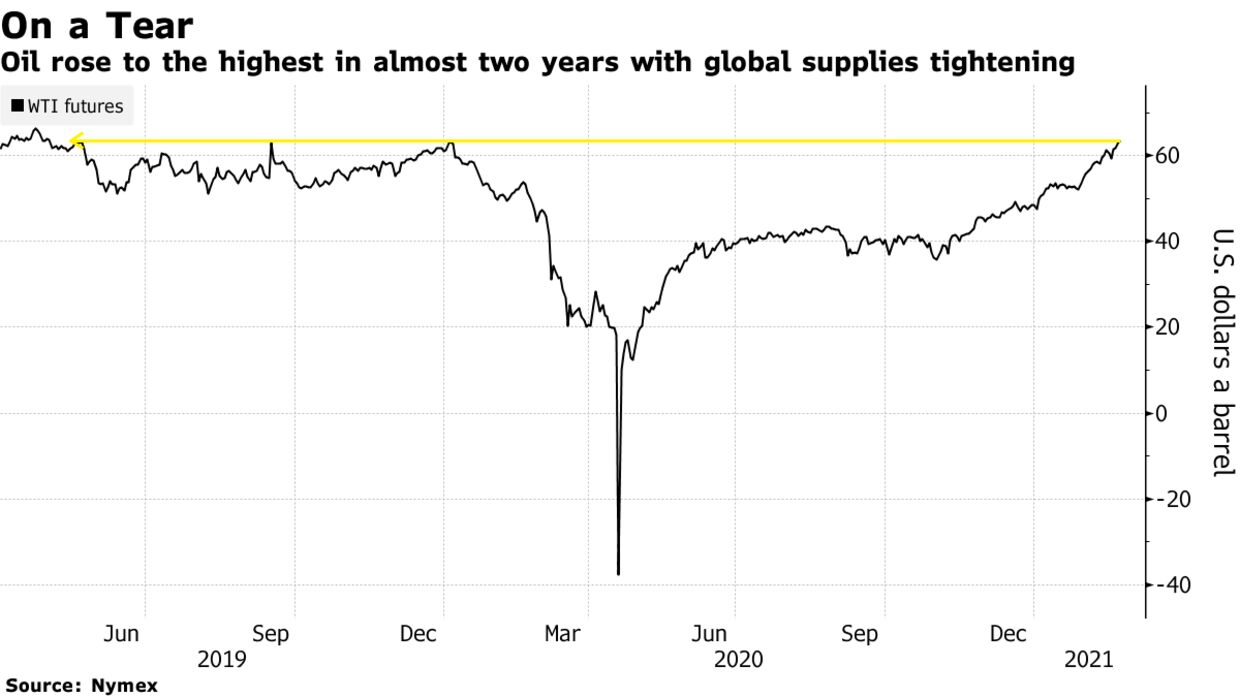Oil climbed to the highest in more than a year amid optimism of swiftly depleting global oil inventories. Futures in New York closed 0.5% higher on Thursday. The oil futures curve continues to signal a tighter market. U.S. crude inventories are near the lowest levels in about a year, while exports of five key crudes in the North Sea fields are seen slumping in April. As a result, crude time spreads are strengthening in a bullish structure known as backwardation.
“Looking forward in the market, we’re seeing a significant backwardation, which signals that there is an anticipation of an easing of virus restrictions coming,” said Gary Cunningham, director at Stamford, Connecticut-based Tradition Energy. “The market is looking toward more normal inventories heading into the summer, if we don’t see a flooding of markets.”

U.S. crude futures are up nearly 22% in February with expectations of shrinking supplies and as economies worldwide begin to reopen, signaling a further rebound in consumption. Still, the market is facing a possible supply increase in April from OPEC+. The producer group meets next week to discuss its strategy with key members differing on the path forward.
“By the summer, leisure travelers who haven’t been able to travel who are now vaccinated,” will be driving an uptick in demand, said Jay Hatfield, CEO at InfraCap in New York. “Supply is not going to respond like it has in the past,” with U.S. production likely remaining restrained.
| PRICES |
|---|
|
Shale explorers reported almost 6 million barrels of combined oil-output losses during the freeze last week. Occidental Petroleum Corp. and Pioneer Natural Resources Co., two of the largest producers in the Permian Basin, alone had a combined loss of about 3.8 million barrels, according to Bloomberg News calculations based on fourth-quarter earnings reports and calls. Meanwhile, refineries along the U.S. Gulf Coast are in the process of restarting, though some plants are facing lengthy repairs to key processing units.
